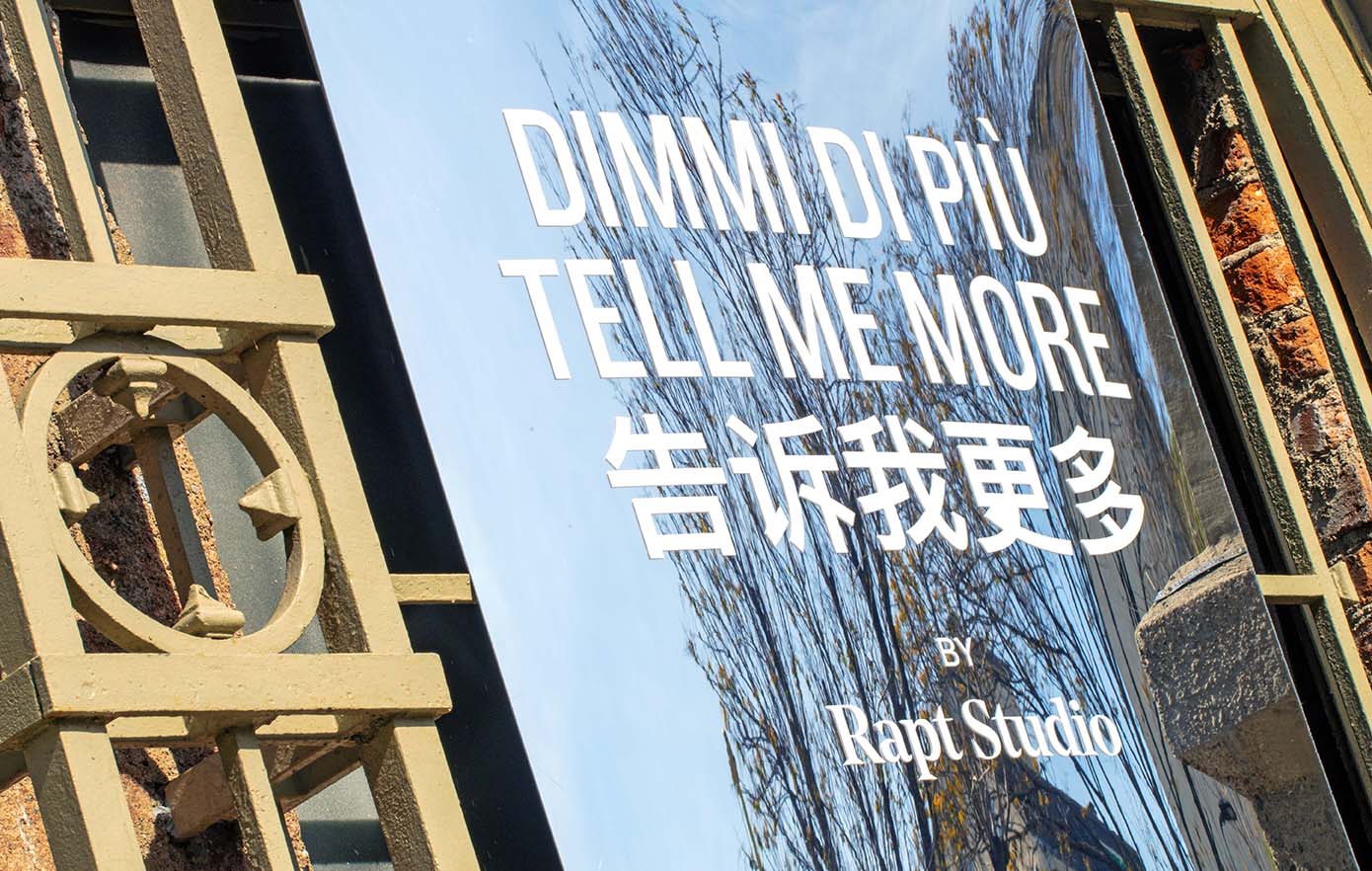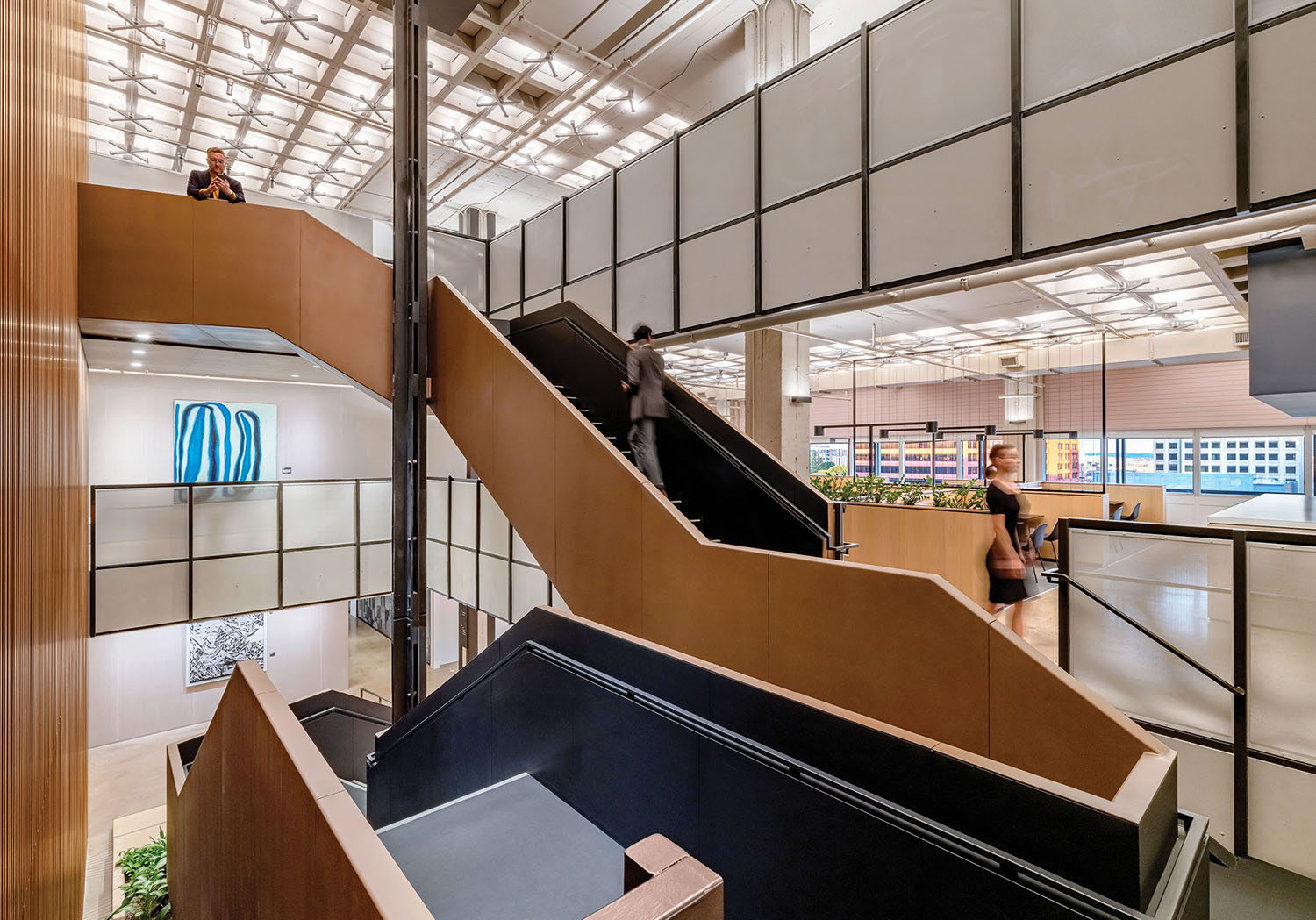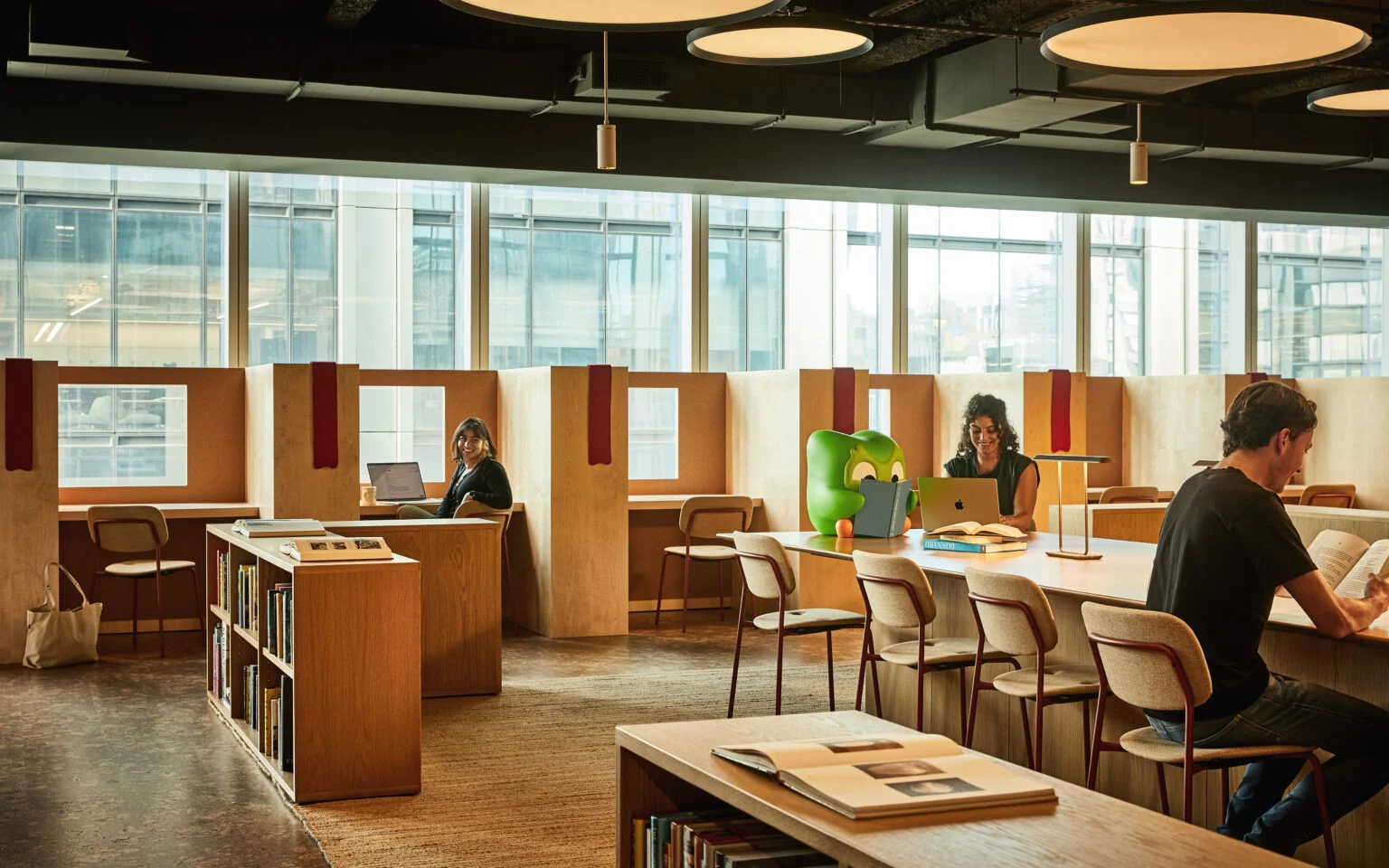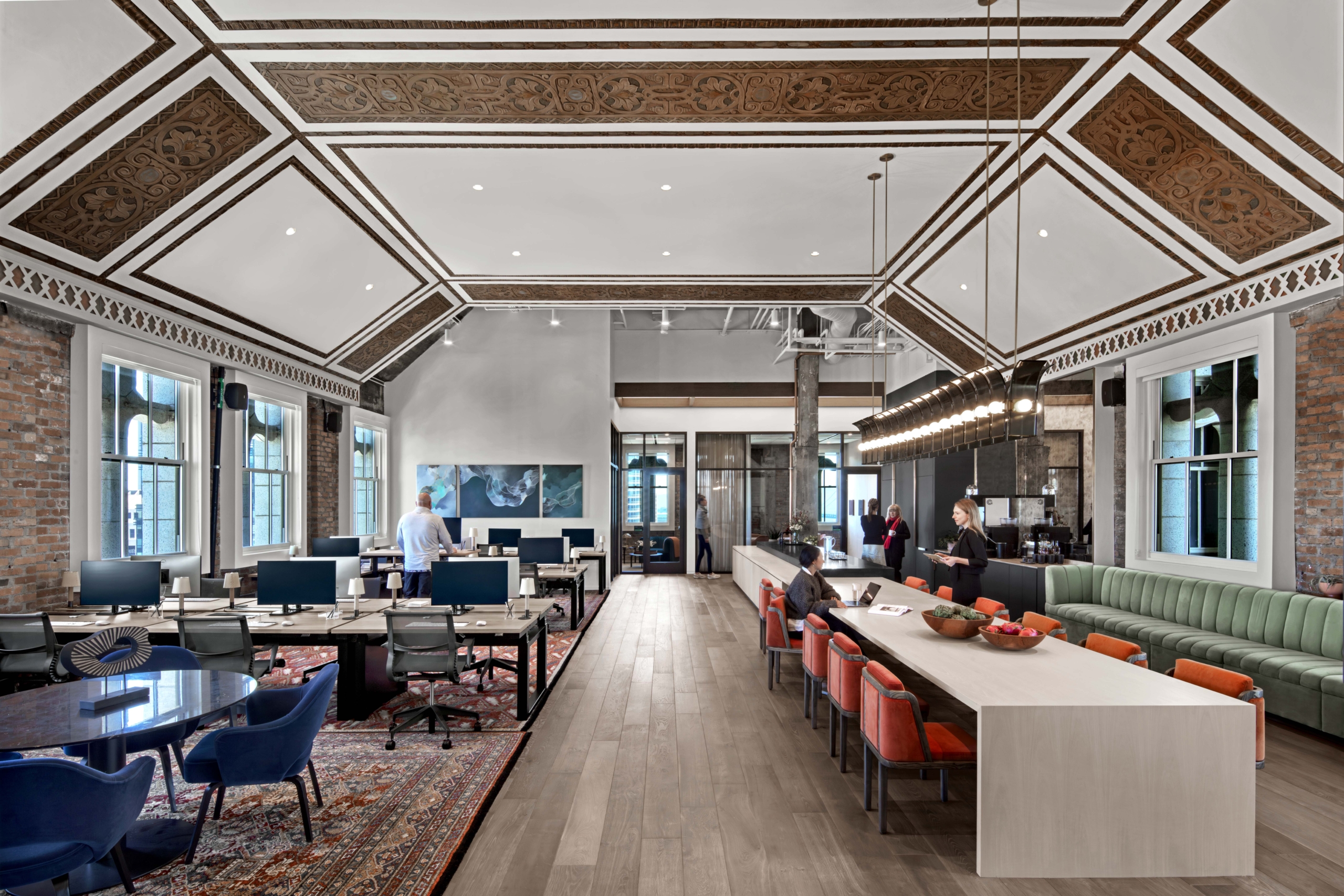Final Thoughts
It took me longer than expected to sit down and write the recap of our experience at Salone in Milan this year. I instead moved on quickly to the bright shiny objects that shuffle before me on any given day back in “the real world.” My marketing group has badgered me one too many days for me to continue to ignore them, so here I sit looking back at our time in Milan.
And I must admit, it’s nice to revisit.
It’s been 7 weeks since we broke down our installation, shipping crates back to our San Francisco studio – among them some 30,000 cards of questions, written by the tens of thousands of visitors in multiple languages, all asking questions of the larger whole.
More on that later.
Rapt has been developing strategy and design solutions for workplace, retail and hospitality projects, the world over, for incredible clients throughout the years. Through North America, Europe, and Asia we focus on the same overarching challenges:
- How to tell a compelling story in a world where there are too many competing voices vying for attention
- How to have a deeper, more meaningful conversation in a world built on sound bites and catch phrases
- How to build meaningful connections in an increasingly disconnected, connected world (if that even makes sense)
As you may know, this was our first outing at Salone.
Our decision to be an official participant in Milan Design Week this year, instead of just being an observer, was part storytelling and part research. By that I mean that we originally decided to design an installation to tell a story – initially around a client partner’s messaging but ultimately settling comfortably on telling our own story: what do WE believe to be true? Why do we do what we do? Why?
We knew that we wanted to do something that challenged people to engage. We also knew that we wanted to do something that brought people together. We wanted to not just show something, but we wanted to facilitate a larger conversation and hopefully come home having learned something…. We knew those things.
What we didn’t know is if it would work. Could we make people slow down, drop their phones to their side and question their beliefs, talk to a stranger, be a player in the event instead of an audience member? We also wondered what questions people would ask if they could ask anything. To anyone.

As research, our premise that people really did want to “belong,” and that spatial construct can assist in forging those connections, was proven out. It seemed that people did want to connect – that the glimpse into another person’s queries, comparing them to your own and aligning with others around issues of the day, was a bonding experience. It seemed that people really were engaging… leaving with a sense of a larger whole. It is much the same as purchasing a luxury car – you are a BMW person or an Audi person… you are part of a tribe, a club….
While the initial interaction was akin to a hug you might give to a great aunt who doesn’t wash as often as she should, there was often a deeper leaning-in to the experience that followed. People entered in groups and while the curtains were scaled to the individual, often two or three people gathered, backpacks protruding from the soft boundaries. The questions were more often than not deeper than expected, focusing on universal issues – happiness, contentment, and sex.


What we were a bit surprised by was the level of resonance. Salone is a week during which you are bombarded with beautiful. Intense and non-stop visual stimulation is the norm and after a day or so, it is hard to be truly engaged. Yet, as the week progressed, the lines for entry continued to grow, with people spending more and more time within the lounge area as the week wore on and as the questions dangling from the vault became more plentiful.



I was proud to be among others that were testing the limits of space (scale, light, color, materiality) to foster emotional connection – Google showed up in a big way with their “Space for Being,” looking to prove that design decisions can directly affect people’s health. At Rapt Studio, we have always believed in the power of a story well told – shared histories, the power of feeling a part of something larger than yourself – and in Milan this year, we were able to bring that to life and frankly watching it play out was great fun.
AND while Rapt Studio took top billing, as with many things it takes a village.
In this case, we were lucky enough to build a village of talented and generous people and the brands they created to bring “Tell Me More” to life. We couldn’t have done it without them and frankly had we, it wouldn’t have been nearly as much fun! I would like to personally thank:
- RBW for their generous donation of all of the lighting throughout – the lounge’s attitude was built solidly on the foundation of the VITIS chandelier, for sure – and to Charles and Alex for hanging out with us for the week.
- ERIK BRUCE for the gorgeous bespoke drapery and for being an incredible human whom I am so excited to have gotten to spend time with (looking forward to doing more of that).
- BLÅ STATION and SANCAL for setting the stage with incredibly comfortable and expressive seating and tables.
- CONCRETE COLLABORATIVE for the amazing hand finished terrazzo piers and platforms and to Kate and Anne Cecile for hanging with us and definitely upping the style quotient.
- MOOOI CARPETS and Mae Engelgeer for the beautiful area rugs – the first time shown anywhere.
- THE BRADLEY COLLECTION for the beautiful bespoke drapery hardware.
- BART HALPERN, CARNEGIE AND CREATION BAUMANN for incredible, luscious fabrics.
I would also like to send a huge Thank You to Studio Grassi Design and specifically to Matteo for being our construction partner – we could not have done this without you! And of course to the unbelievably talented and committed Raptors who worked tirelessly to pull this off – you know who you are and I am humbled to be able to work with each of you every day.
Lastly, I said above that there would be more on the cards… the questions posed by strangers…. We are busy compiling the best, the like-minded, the outrageous, and the profound and are planning on publishing a book letting you in on the questions of our time. So stay tuned. It’ll take a while to get pulled together, but it should be good….
So, that’s a wrap on Salone del Mobile 2019. We have already begun discussions on how we would like to engage with this important gathering in 2020, after a bit of rest, so see you next year for sure.
Ciao.
Days 3 & 4: April 12 & 13, 2019
Day Three and Four in Milan were a blur. So much so that I didn’t get a chance to sit down and write a post. The thing about Design Week is that there is so much stimulation, between installations, exhibits, events and dinners, that it is hard to fit more than a few hours of sleep in each night.
Our installation is going strong, having more than 12,000 visitors participate, so far. The space has totally transformed since Monday, and looking back at the photos taken that day it seems that it was a half completed project, with the thousands of questions written in a wide array of languages completing the vision.
Our various team members have taken some time off from manning the Rapt space to see what Design Week has to offer, and there were definitely a few highlights. Our visit to the Armani Silos was a showstopper. The incredible space features designs from the Armani Collection, and during Design Week it’s hosting “The Challenge,” an exhibition of the works of Tadao Ando. The incomparable fashion on display somehow makes perfect sense as a lead-in to the timeless work of Ando, both exploring simplicity of materials and form. Stunning from start to finish.


This year, there is a larger than normal array of technology, automotive, and electronics companies hosting exhibits. Google’s “A Place for Being” presents “scientific proof that design is important” in a exhibit that equips the visitor with a wrist band that measures your physiological reaction to different room settings — utilizing color, sound, smell and various design principles to offer different “neuroaesthetic” options. Having experienced each space, you are given a customized read-out identifying the space in which you felt most at ease and comfortable in.
Lexus offered a slightly less serious take on design, presenting “Lead with Light,” a sort of dancing robot light show — compelling and engaging.

A longer than expected trip to Rosanna Orlandi Galleries had us weaving through the gallery’s incredible mix of objects, furniture, lighting and textiles. The upstairs space houses an incredible array of art and design objects, with more items than can be imagined stored neatly in the shelving that surrounds the space. Within the compound was an Eileen Fisher installation of fabric panels (modern-day tapestries) made from returned, used clothing that were simply gorgeous — subtle, textured and unique, it was a beautiful display of making art from items deemed beyond their useful life.


There were lots of other sites and sounds to report on, but I ended Friday with a short interview on Monocle 24 Radio, talking about the experience of putting up an installation during Design Week and moving from an observer to a participant. After all, that is where life gets interesting, no?


Heading home tomorrow, but will revisit some lessons and reflections from our week here in Milan early next week. Ciao.
Day 2: April 11, 2019
Day Two of Milan Design Week brought large crowds to our installation welcoming nearly 3,000 visitors today. It has been interesting to see the space morph as more and more questions are hung. The exhibit in some ways is becoming less and less Rapt’s and more and more the product of the participants’ making. More on that in the days that come.
Meanwhile, I took the opportunity to visit other exhibits around the city, finding inspiration among others’ creative output. I spent the morning at McKinsey’s “The Business Value of Design” panel discussion, which was built around the McKinsey Report finding significant correlation between successful businesses and the degree to which they embrace design.

The discussion was thought-provoking, but for me it just offered credible metrics to prove something we already know. See the report here.
A short visit to the Hem showroom and Moooi filled my midday, before I settled in at the Vitra Design Museum’s Politics of Design Conference. The discussion centered on design — Post-Industry, Post-Government, Post-Nature — and centered on the designer’s role in solving larger societal problems. It has always been my belief that design is the creation of elegant solutions to complex problems — so, again, I was at home with the conversation.




I’ve experienced Milan Design Week differently this year. Perhaps it’s because I’m on the other side of an installation. Perhaps it’s because I just see things differently, having lived through the last six months of planning (although the heavy lifting was clearly handled by others — more on that later in the week as well). But I think that I’m more fully focused on the responsibility of design, the incredible joy of celebrating it, and the power of design to bring people together.
The other element of Design Week is the food and drink — and to that end, I’m late for cocktails. More tomorrow.
Day 1: April 10, 2019

Today we opened our doors at 10 a.m. to a long line of trade professionals, eager to start their week and see as much design as humanly possible. For those of you who have been to Milan for Salone Del Mobile, you know to what I’m referring. For those of you who haven’t, I can only say that this week is a marathon, not a sprint. With the entire city giving over to design, there is much to see across the city; the inspiration is exhilarating (and exhausting).
So at 10 a.m. on Day One we were met with excitement that manifested itself at a more frenetic pace than we’d anticipated. I will say that we half-expected people to arrive ready to move through quickly, take the required Instagram post, and run off to the next thing. I’ll also say that I secretly hoped that people would arrive with this mentality and — when greeted with a more human, potentially thought-provoking experience — would take a breath, sit down, and talk.
Both scenarios happened.



I realized that far more of us than I thought are programmed to move through life behind phones, camera at the ready, recording and observing the events unfurling before them, perhaps missing the experience while looking for the perfect shot to share with their followers in search of likes.
I also realized that there’s an equal number of people who did, in fact, slow down and dig deep for a meaningful question; who stayed a bit longer, lingered to sit, talk, and search through questions; who actually committed to making this an experience. Perhaps this is my mind filling in the blanks with my hope for humanity, but I seemed to notice a sense of belonging for those particular visitors — a slight slowing to the “Design Week March.” Perhaps it was just an illusion, but by afternoon, while the line never diminished in numbers, the pace slowed and instead of walking through and merely viewing the lounge on display, a larger proportion of visitors sat and lingered.


Tomorrow is another day, and as the volume of questions dangling from the vaulted ceiling multiplies so do my hopes for people relearning to interact naturally, to connect with those around them, and to broaden their experience — and for design to be fully understood as a tool for societal change.
Those are my thoughts for the day. Tomorrow I venture out and will report back on some favorites of the day. Ciao!
Press Preview: April 9, 2019
Yesterday we hosted the press preview for our Milan Design Week installation. As you may have gathered from our social feeds, we have been working for quite some time on our installation for Milan Design Week called Tell Me More. The installation examines the power of space to support and foster human interaction and meaningful emotional connections.
It is our first time out in Milan for what has become one of the most important design festivals in the world. During this week, all of Milan opens its doors and hearts to design, hosting talents from around the world and highlighting the power of design through new product introductions and experiential installations across the city.
Our installation, located within Ventura Centrale, takes an abandoned train shed and examines the connection between spatial construct and emotional connection, as well as psychological safety and human interaction.
Working for the last nine months to bring this installation to life has been a labor of love, and as with all things of this nature, it took our team’s hard work and determination. Opening to trade professionals on Tuesday and to the public on Thursday, the installation runs through Sunday. But yesterday was about introducing the concept to the press and seeing the first reactions.


Upon entry to the space, the cool glow emanating from drapery-clad volumes gives a glimmer of what is within — enough to require a peek inside. When guests entered and were met with a question posed by the person before them, they took the card and left another with a similar query. The internal illumination of the space allowed for activity outside to drop away, and a sense of privacy encouraged a deeper dive for a question of real meaning. “When were you the happiest?” or “What has been your most poignant dream?”
When done, guests made the short meander into the lounge, which brings a change of mood. A warmer, comfortable tone, elevated seating areas, and a sea above of glimmering lights and the burning questions of the day… Here you are met with groups of people deep in conversation, posing questions and offering answers. And in a world that has disappeared behind its phones, this is a place that people stop being observers and put themselves center stage to engage.


The day was a great success, and the response was extremely positive. We hosted press from around the world, with questions posed in multiple languages. Today we open in earnest and will continue to collect questions and connect people — showing the real power of design to make you feel part of something greater.
We’d like to thank our partners in this endeavor, including Erik Bruce, Rich Brilliant Willing, Moooi Carpets by Mae Engelgeer, Concrete Collaborative, DZINE, Sancal, Bart Halpern, Blå Station, The Bradley Collection, Carnegie, and Création Baumann.



